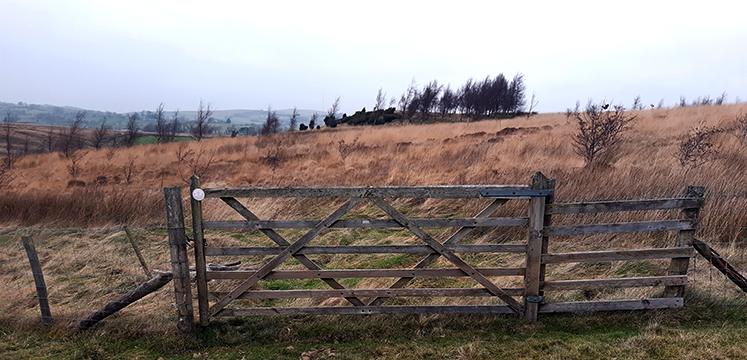In 2008, consents were given under section 38 of the Commons Act 2006 to fence off three relatively small areas of Caldbeck and Uldale Commons for a period of fifteen years. Consents for these stock-proof fences will expire in July 2022, and we have asked the Secretary of State to extend the fencing consents for another 15 years to allow the woodlands to reach maturity. Our application was submitted on 9 April 2022.
The fences were erected to exclude grazing stock to allow newly planted trees to establish and recreate pockets of upland woodland on this part of the Skiddaw Massif. The three areas are at Branthwaite and Burblethwaite on Caldbeck Common, and in Charleton Gill which spans part of both Uldale and Caldbeck Commons.
Location of the three common areas
The three areas were originally identified in 2007 under the Wealth Of Wildlife (WoW) project led by Cumbria Wildlife Trust (CWT). Detailed planting plans were developed and in total, over 10,000 locally native mixed broadleaf trees were planted in 2008 and 2009. Planting was designed to mimic natural regeneration and followed Forestry Commission guidance as outlined in Bulletin 112, ‘Creating New Native Woodlands’.
The design and exact line of the stock-proof fences took into account many factors including that the new fences didn’t interfere with stock management on the commons (hefts, shelter and entanglement risk), their visual impact, and ensuring there were no restrictions to any tracks or paths. Gates and stiles were included in the fence lines at suitable locations to provide access.
The stock fences, gates, stiles, tree guards and stakes have been monitored and maintained by the Lake District National Park Authority (LDNPA) since 2008 by staff and volunteers. Tree losses have been relatively few in number. So far the scheme has been successful and the three areas of woodland have begun to develop well. However, tree growth is slow in upland areas and Natural England (NE) have recommended the fencing at all three locations is retained for a further period of 16 to 20 years to protect existing trees and ground flora, and to allow further trees to become established by natural regeneration.
Read a full review of the fenced areas and recommendations by Natural England (word doc).
As landowner of these commons the LDNPA have the desire to see these woodland schemes continue to develop. Maintaining stock-proof fencing will allow the upland woodland and scrub to reach maturity, and a rich mosaic of habitats to develop. The enclosed land remains Open Access with a number of gates and stiles included in the fence lines at suitable points. These areas will contribute to nature and biodiversity recovery, to storing carbon and to helping alleviate flooding by slowing water flow. Open Access remains unaffected across the larger common area which continues to support the livelihoods of Commoners.
Taking these factors into account along with initial views expressed by Caldbeck and Uldale Commoners and others, we remain convinced that the investment in money and effort over the last 15 years would largely be wasted, together with current and potential biodiversity gains, if the fences were removed now.
The application to the Planning Inspectorate
An application has been made to the Planning Inspectorate for consent to retain the fences for a further period of 15 years.
The Planning Inspectorate consulted on our application; the consultation period has now closed. The Planning Inspector will now decide the application, and their decision will be issued in due course. The decision by the Planning Inspectorate will will be posted on this page once it is available.
View the full application document (pdf)
View supplementary information that was submitted with the application form here
The following maps were also submitted as part of the application:


